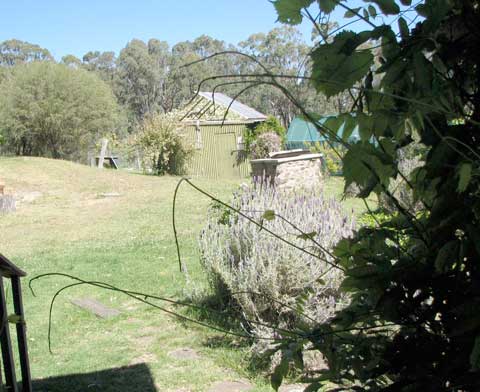 Spring is a really risky time to leave the property for any length of time. And it’s not only that the animals think they can step in and lay claim to my apparently unoccupied place.
Spring is a really risky time to leave the property for any length of time. And it’s not only that the animals think they can step in and lay claim to my apparently unoccupied place.
This time it was the verandah vines, the wisteria and the ornamental grape — which had decided to join forces and extend their tentacles to block my entry.
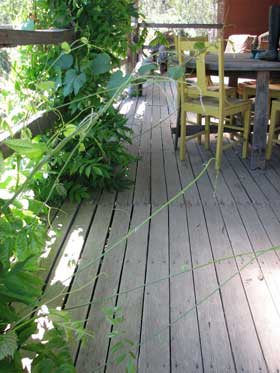 Even when I’d got past those on guard at the top of the steps, it was clear that those on the verandah proper had already reached halfway towards the door.
Even when I’d got past those on guard at the top of the steps, it was clear that those on the verandah proper had already reached halfway towards the door.
They had claimed the table and chairs as the interim prop and were looping around each other for strength to continue their horizontal attack. I dare say they were most frustrated, after all that effort, at my insistence on re-looping them back to the railing edges.
They can confine their adventurous tendencies to heading for the roof – where they’ll get a shock because I’ve removed the guttering. What will they block now?
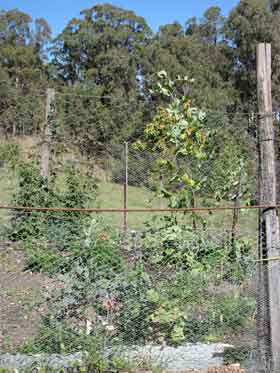 My vegie garden has been so variously girded and further girded that I felt it was a fortress.
My vegie garden has been so variously girded and further girded that I felt it was a fortress.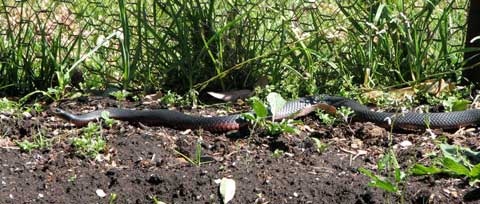 As I watched it slither in and out of my once harmless young vegie rows, erratically rearing up to poke at the netting, I indulged in a longish bout of teary despair. Fearing it was trapped, I phoned a snake-wise friend who said my aviary wire was nowhere near high enough and yes, the snake could have climbed up the netting until it reached the larger holes. I hadn’t imagined it would make such an effort — why would it bother??
As I watched it slither in and out of my once harmless young vegie rows, erratically rearing up to poke at the netting, I indulged in a longish bout of teary despair. Fearing it was trapped, I phoned a snake-wise friend who said my aviary wire was nowhere near high enough and yes, the snake could have climbed up the netting until it reached the larger holes. I hadn’t imagined it would make such an effort — why would it bother??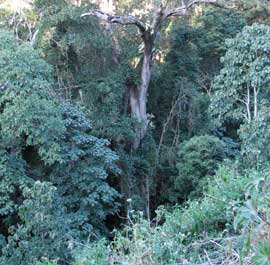 Drivng back from the Gloucester district a few weeks ago, I passed above the very steep and narrow, very special gully near Dungog where a remnant rainforest of giant trees like figs and stinging trees and white cedars stand tall and proud amidst a dense jungle of vines competing for the light.
Drivng back from the Gloucester district a few weeks ago, I passed above the very steep and narrow, very special gully near Dungog where a remnant rainforest of giant trees like figs and stinging trees and white cedars stand tall and proud amidst a dense jungle of vines competing for the light.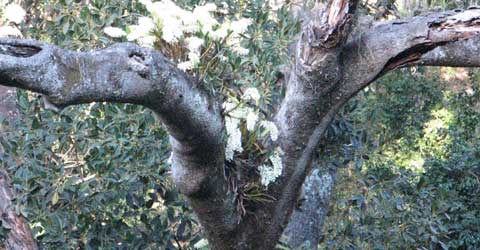 Thanks to the magic of my zoom lens, I could be sure that they were King Orchids (Dendrobium speciosum, var. hillii) Hundreds of feet up, several fat clumps of them had colonised in forks of the trunk, clinging on with their fleshy fingers as they climbed along the broad branches. A staghorn shared their treehouse.
Thanks to the magic of my zoom lens, I could be sure that they were King Orchids (Dendrobium speciosum, var. hillii) Hundreds of feet up, several fat clumps of them had colonised in forks of the trunk, clinging on with their fleshy fingers as they climbed along the broad branches. A staghorn shared their treehouse.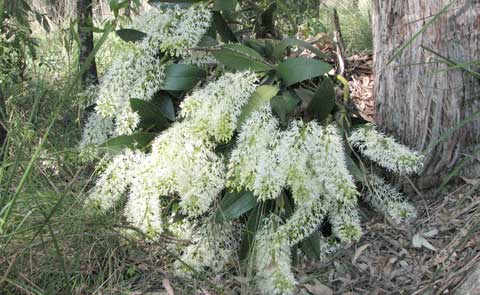 At the time, my orphaned clumps of the same orchid had been still in bud, my place being so much higher in altitude.
At the time, my orphaned clumps of the same orchid had been still in bud, my place being so much higher in altitude.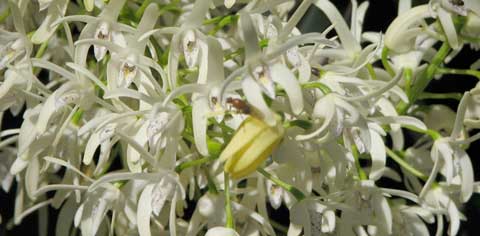
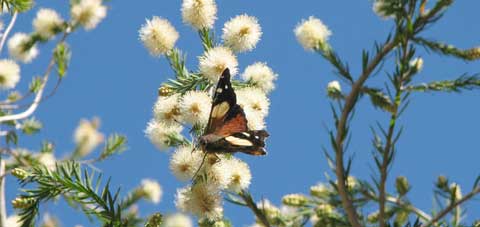 I have two of these shrubs planted in my yard. They are native, although not indigenous to the area, but this is my garden after all. I think they are Melaleuca ericiflolia, or Swamp Paperbark. This Spring everything seems blessed with an abundance of blossoms, in excess of years past.
I have two of these shrubs planted in my yard. They are native, although not indigenous to the area, but this is my garden after all. I think they are Melaleuca ericiflolia, or Swamp Paperbark. This Spring everything seems blessed with an abundance of blossoms, in excess of years past.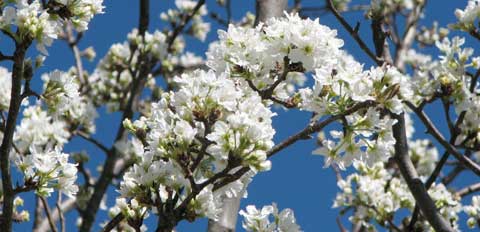 My two huge nashi pear trees are decked out in bridal white — so pure and pretty that it hurts my heart to see it.
My two huge nashi pear trees are decked out in bridal white — so pure and pretty that it hurts my heart to see it.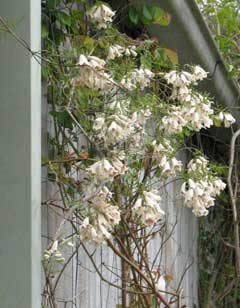 My shed is made from rusty but sound old corrugated iron, with no charm in shape or design to allow me to call it ‘rustic’. So it has to be disguised.
My shed is made from rusty but sound old corrugated iron, with no charm in shape or design to allow me to call it ‘rustic’. So it has to be disguised.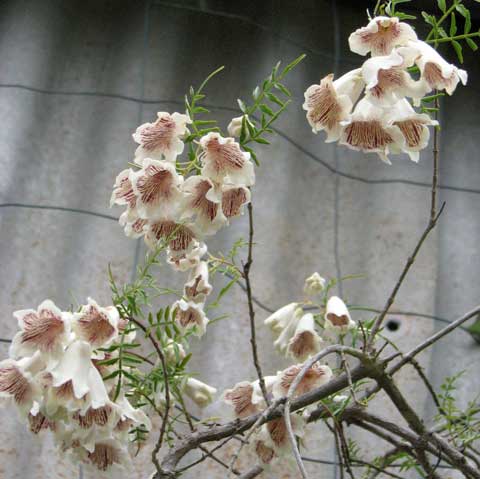 It never has much in the way of foliage and what it has is very fine, but now it has burst into a mass of clustered blossom bells, flaunting their frilly cream skirts and showing off their maroon streaked undersides.
It never has much in the way of foliage and what it has is very fine, but now it has burst into a mass of clustered blossom bells, flaunting their frilly cream skirts and showing off their maroon streaked undersides.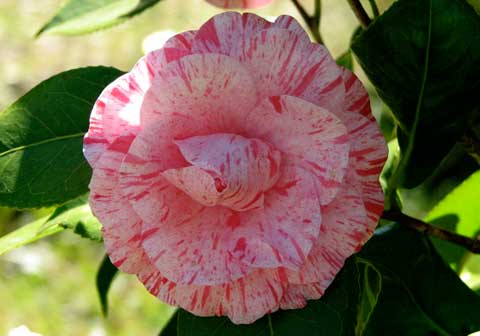 Just spring, and another of my old-fashioned camellia bushes has come into bloom. Grown from cuttings taken from the garden of an old house in Port Macquarie, this one is lolly pink, streaked with strawberry. A candy camellia. Ain’t she sweet?
Just spring, and another of my old-fashioned camellia bushes has come into bloom. Grown from cuttings taken from the garden of an old house in Port Macquarie, this one is lolly pink, streaked with strawberry. A candy camellia. Ain’t she sweet?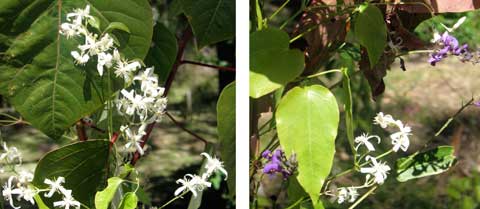 In a less domesticated part of my yard, three native plants have formed a dainty trio. A young Omalanthus tree, often called the Bleeding Heart Tree, only as tall as myself, has been wreathed in thin vines: the clinging bridal shower of Clematis aristata, Traveller’s Joy, and the purple pea highlights of Hardenbergia, Native Sarsparilla. The tree I propagated and planted, the vines are surprise gifts of nature.
In a less domesticated part of my yard, three native plants have formed a dainty trio. A young Omalanthus tree, often called the Bleeding Heart Tree, only as tall as myself, has been wreathed in thin vines: the clinging bridal shower of Clematis aristata, Traveller’s Joy, and the purple pea highlights of Hardenbergia, Native Sarsparilla. The tree I propagated and planted, the vines are surprise gifts of nature.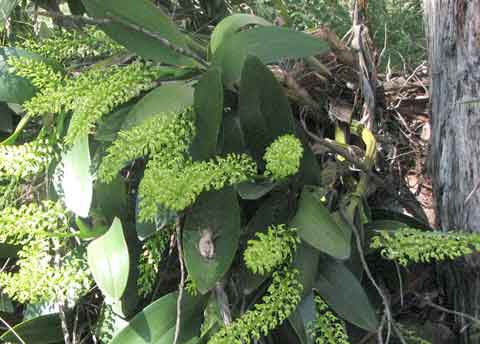 Found in my rainforest gully years ago, the increasing weight of this clump had probably caused the casuarina branch on which it had grown to come crashing down. I relocated it to rocks at the base of a stringybark in my yard, where it has fleshily multiplied since.
Found in my rainforest gully years ago, the increasing weight of this clump had probably caused the casuarina branch on which it had grown to come crashing down. I relocated it to rocks at the base of a stringybark in my yard, where it has fleshily multiplied since.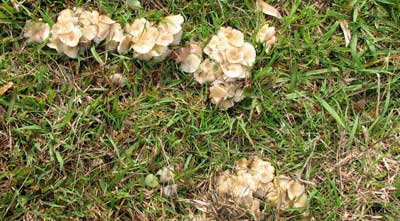
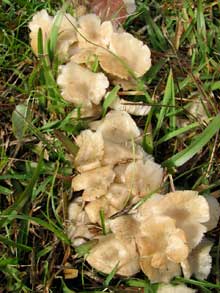 When the rain eased I went closer. Not flowers, but extremely over-populated fungi. Cream to pale caramel, delicate yet fleshy all at once, their lightly fringed caps upturn like the faces of flowers. Fighting for space and light, they fold and layer and then triumphantly open — my blooms.
When the rain eased I went closer. Not flowers, but extremely over-populated fungi. Cream to pale caramel, delicate yet fleshy all at once, their lightly fringed caps upturn like the faces of flowers. Fighting for space and light, they fold and layer and then triumphantly open — my blooms. A few days later they are still there, and then I think I see a new colony several metres away, near the leafless birch trees.
A few days later they are still there, and then I think I see a new colony several metres away, near the leafless birch trees.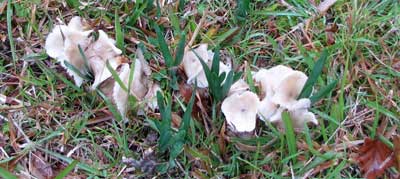
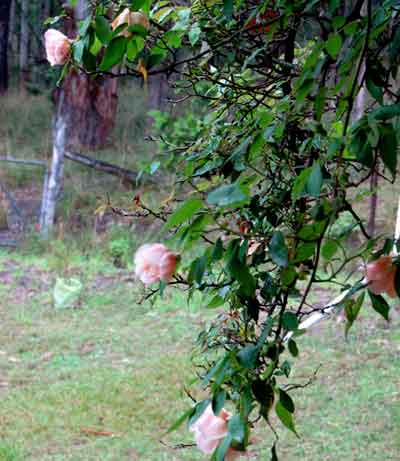
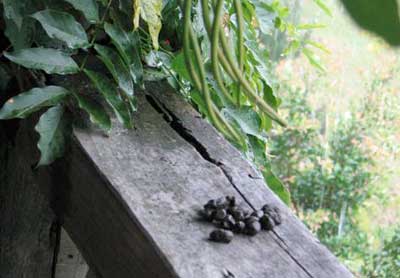
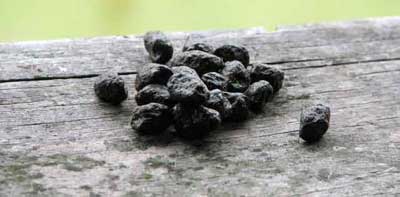
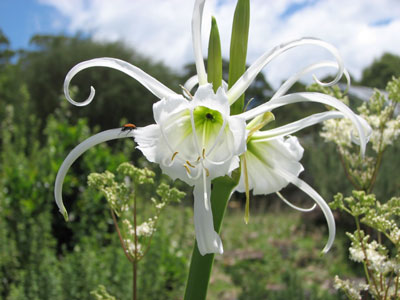
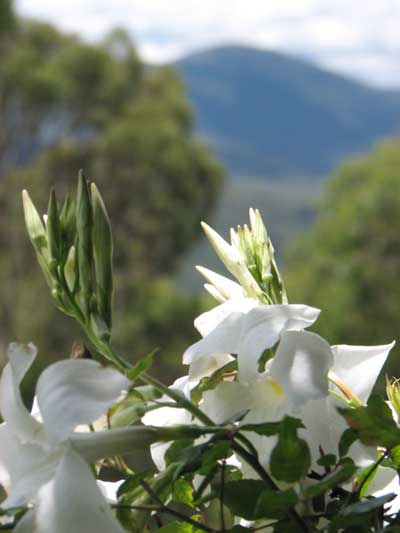
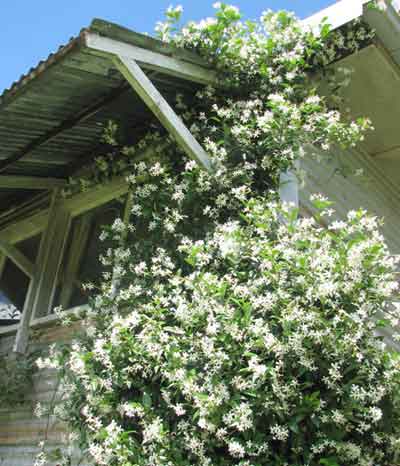
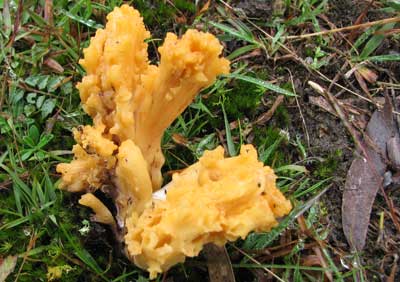

 You may have heard the odd expression, ‘the common or garden variety’.
You may have heard the odd expression, ‘the common or garden variety’.